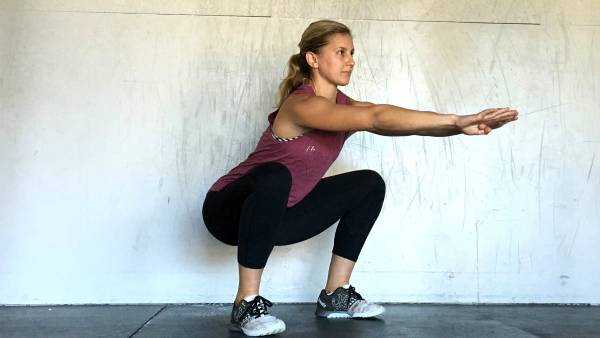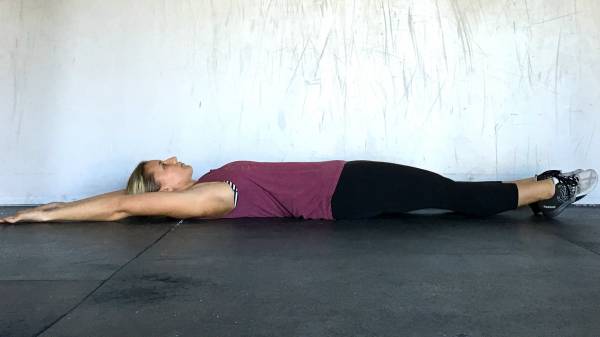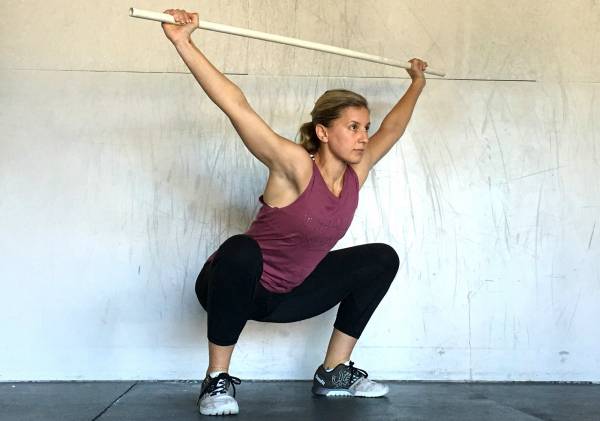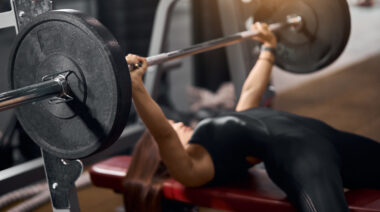Functional flexibility and natural range of motion are the foundations of optimal performance in most athletic activities. Being able to move our bodies in the way they were intended, without restriction, creates efficient movement. For an athlete, this leads to bigger lifts, higher jumps, and increased speed. For everyone else, it means reduced lower back pain, better posture, and improved circulation.
As we age and sit for longer periods of time, muscle imbalances and tightness develop. These cause changes in our movement patterns, which can affect our performance. We can prevent these types of restrictions, but it takes time, energy, discipline, and an understanding of why the body moves the way it does.
Athletes at all levels benefit from revisiting fundamental movement patterns. [Photo courtesy of CrossFit Empirical]
Functional Range of Motion
Every joint in the body was designed with a purpose. Some joints allow for movement in all three planes of motion, like the shoulder joints, and others are set up for movement in only one, like the knee. There are joints like those that make up the spine, which are stacked in a way as to protect the spinal cord while allowing for some movement. The joints with the greatest range of motion are the shoulders and the hips. They also happen to be the areas of the body that contribute greatly to functional movement and the areas athletes struggle with the most.
How does all this translate to performance? If we aren’t able to get our arms fully overhead or squat in a way that doesn’t compromise back position, our power output, strength, and stability become compromised. This means missed lifts and greater risk of injury.
What can we do to prevent these limitations in range of motion? There are many ways to improve movement patterns but one of the simplest is to stretch. Stretching regularly creates freedom of movement in all planes of motion in the major joints of the body. Stretching post workout not only improves range of motion and prevents restrictions, but it also reduces the chance of injury, increases recovery time, and lowers overall back pain.
Assess Your Flexibility
When you start stretching more, you’ll most likely notice tightness in some key areas of the body responsible for functional movement – places like the ankles, hamstrings, hip flexors, lower back, and shoulders. While the following three movements will not provide a comprehensive test, you can use them to gauge the limitations in both your hips and shoulders. If you can’t follow all the cues, you’ve got some work to do.
Squat
- Start with your feet shoulders distance apart with the toes pointing forward.
- Keep your core tight and your heels down.
- Sink your hips back and down as you squat. Fight to keep your chest up.
- Press your knees out on the way up.

[Photo courtesy of Stephanie Ring]
Supine Overhead Extension
- Lay on your back with your legs together and straight.
- Pull your belly button down towards the ground and squeeze your butt.
- Extend your arms overhead. Straighten your elbows and reach the backs of the palms down towards the ground.

[Photo courtesy of Stephanie Ring]
Overhead Squat
- Start with your feet shoulders distance apart and your toes pointing out slightly.
- Bring a PVC pipe or barbell to the hips and walk your hands out wide to find your grip width.
- Bring the bar overhead. Try to spread the bar apart as you turn your elbows up towards the ceiling.
- Keep the bar over the center of your feet as you squat down.

[Photo courtesy of Stephanie Ring]
Persistence Creates Change
The main problem when stretching is that it is difficult to know what to do and then to do it properly. And this is because we aren’t always taught how to stretch. But it is important and should be something you incorporate into every training day. Start today by improving your movement in these three fundamental positions.
Now that you’ve assessed your mobility, try these drills on for size:
3 Mobility Drills for Solid Overhead Lifts
Coaches: Help your athletes squat better:
The Lowest Man Wins: 7 Keys to Hip Power and Mobility






